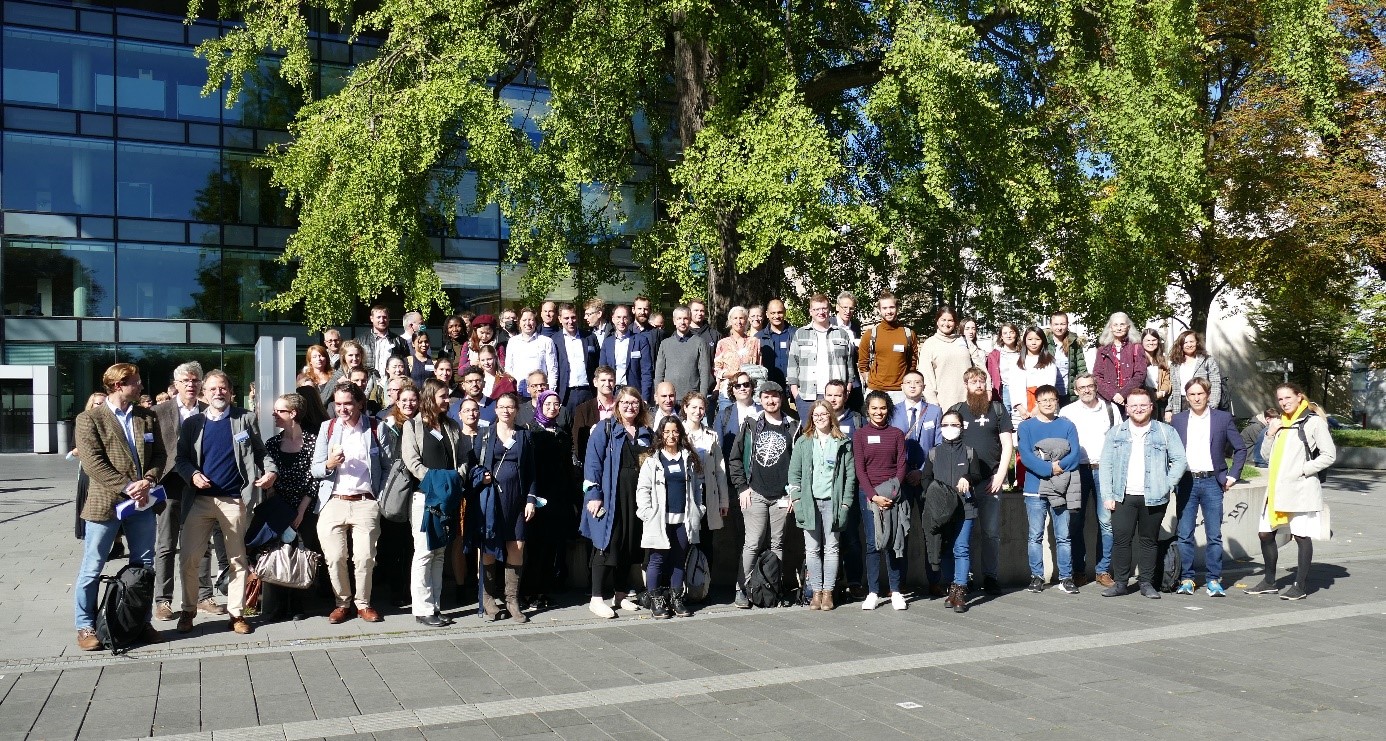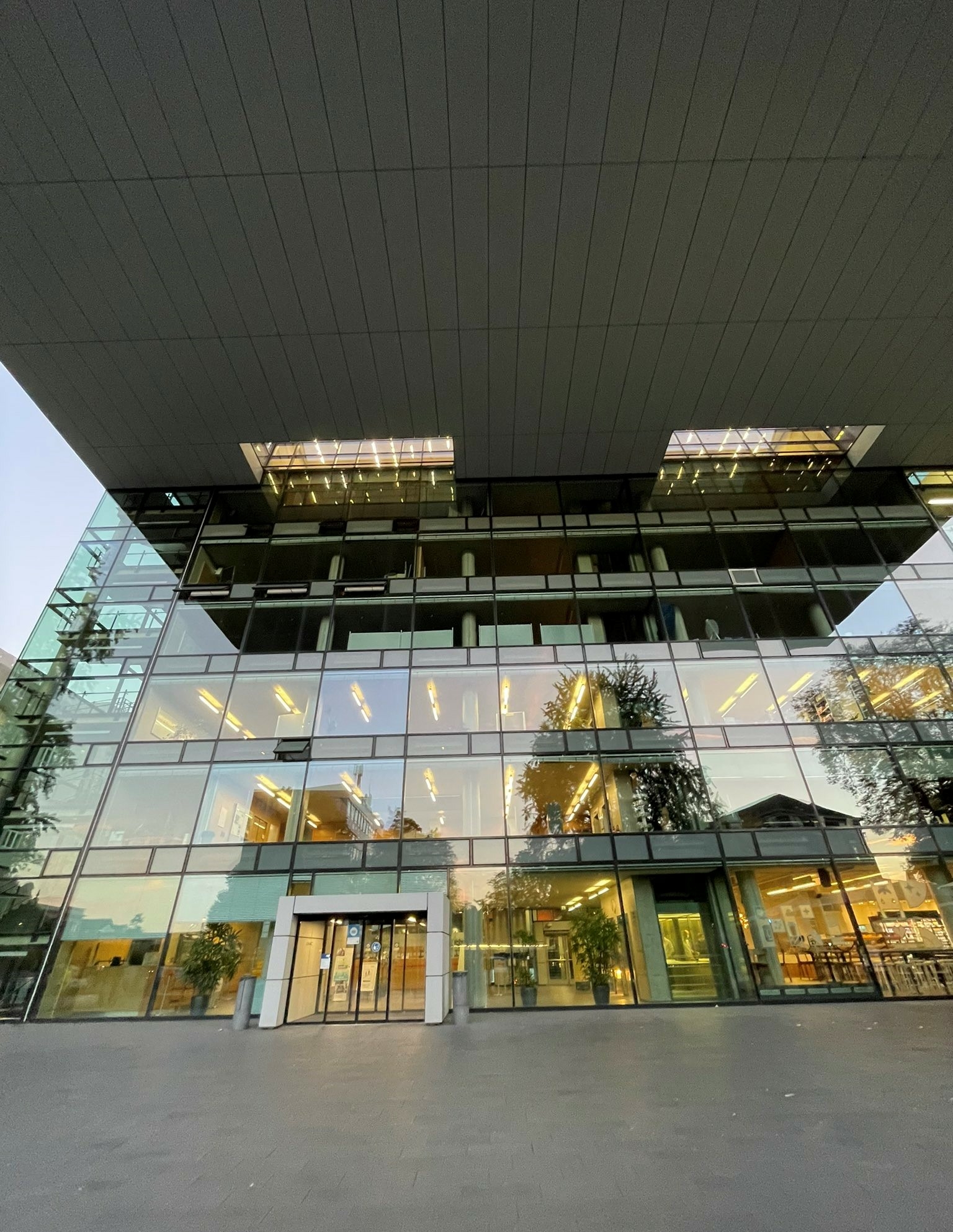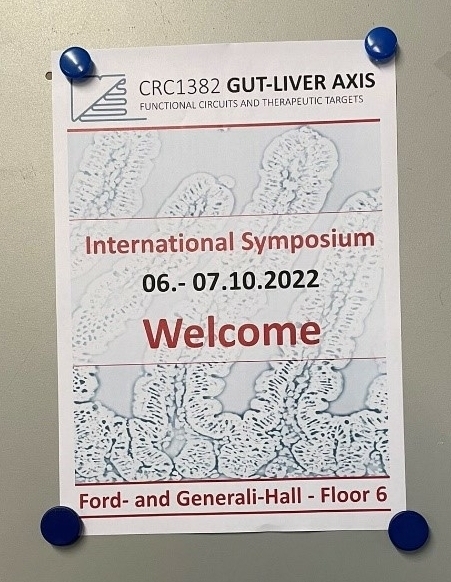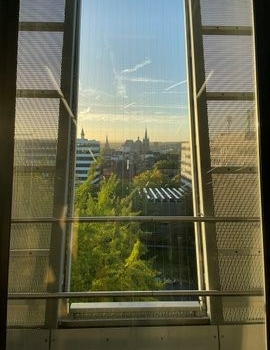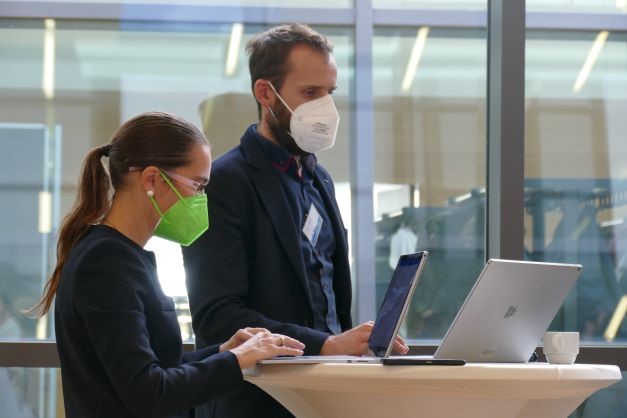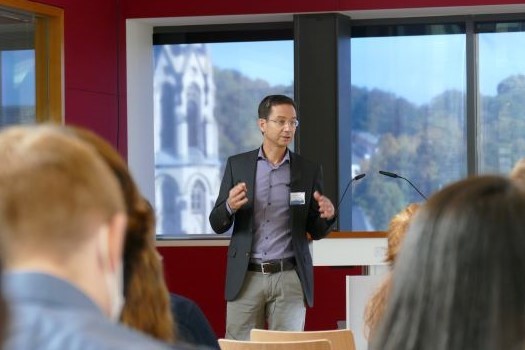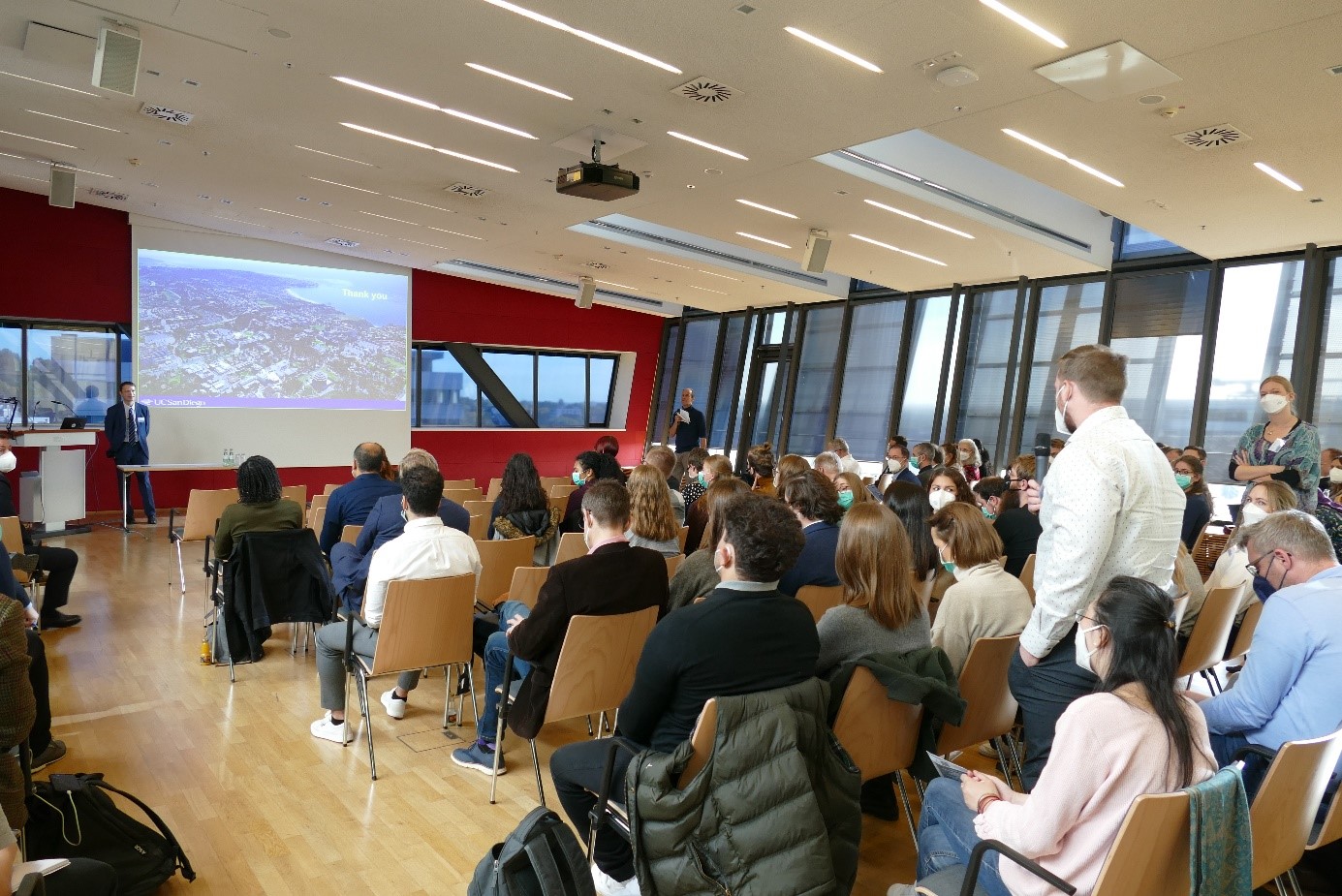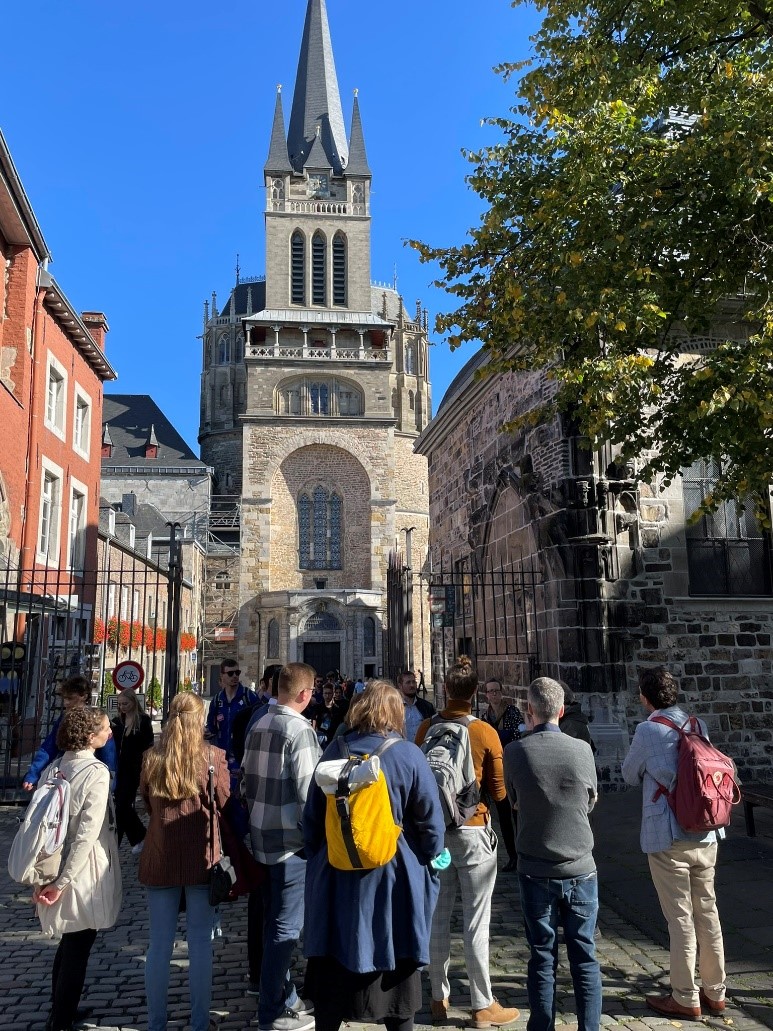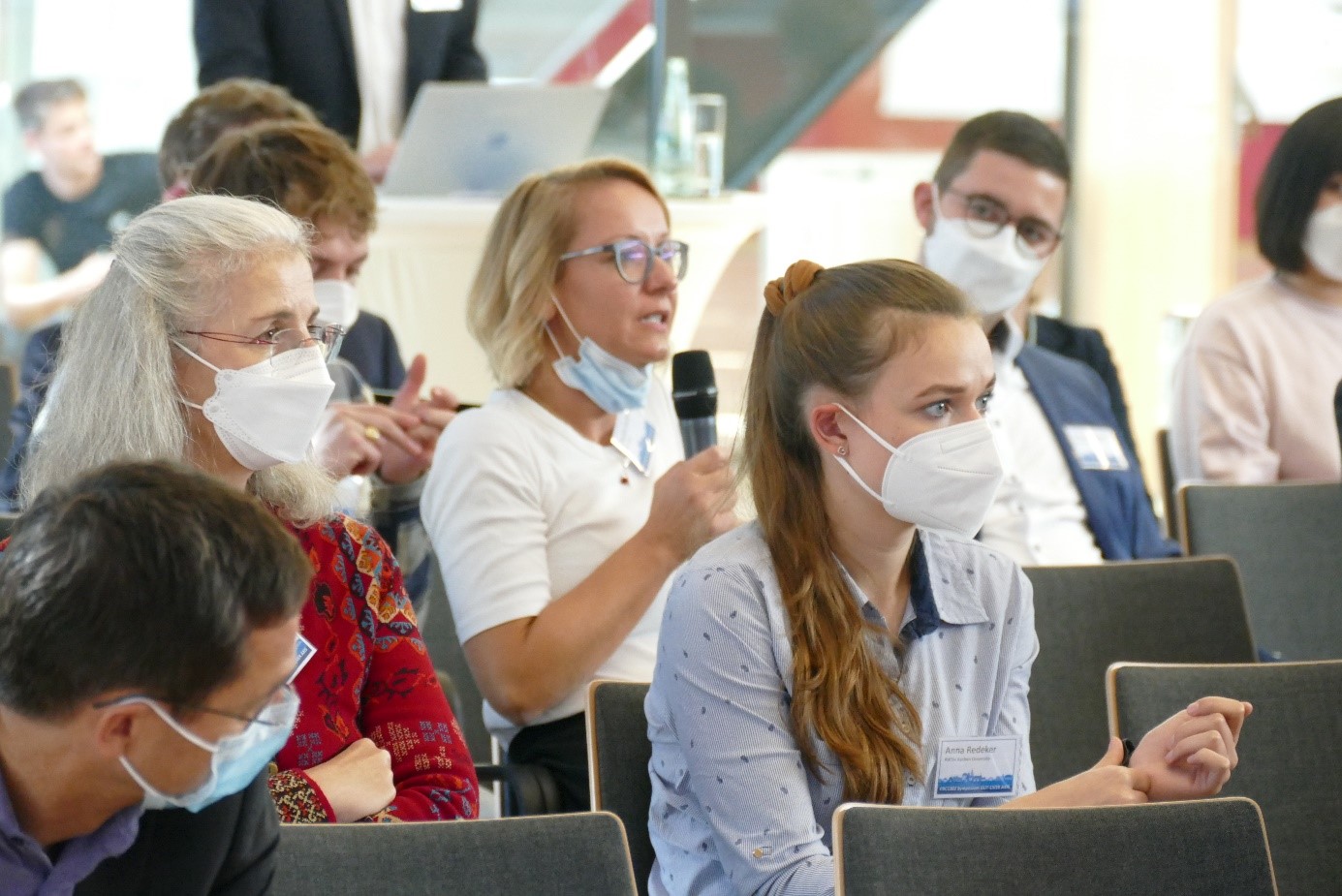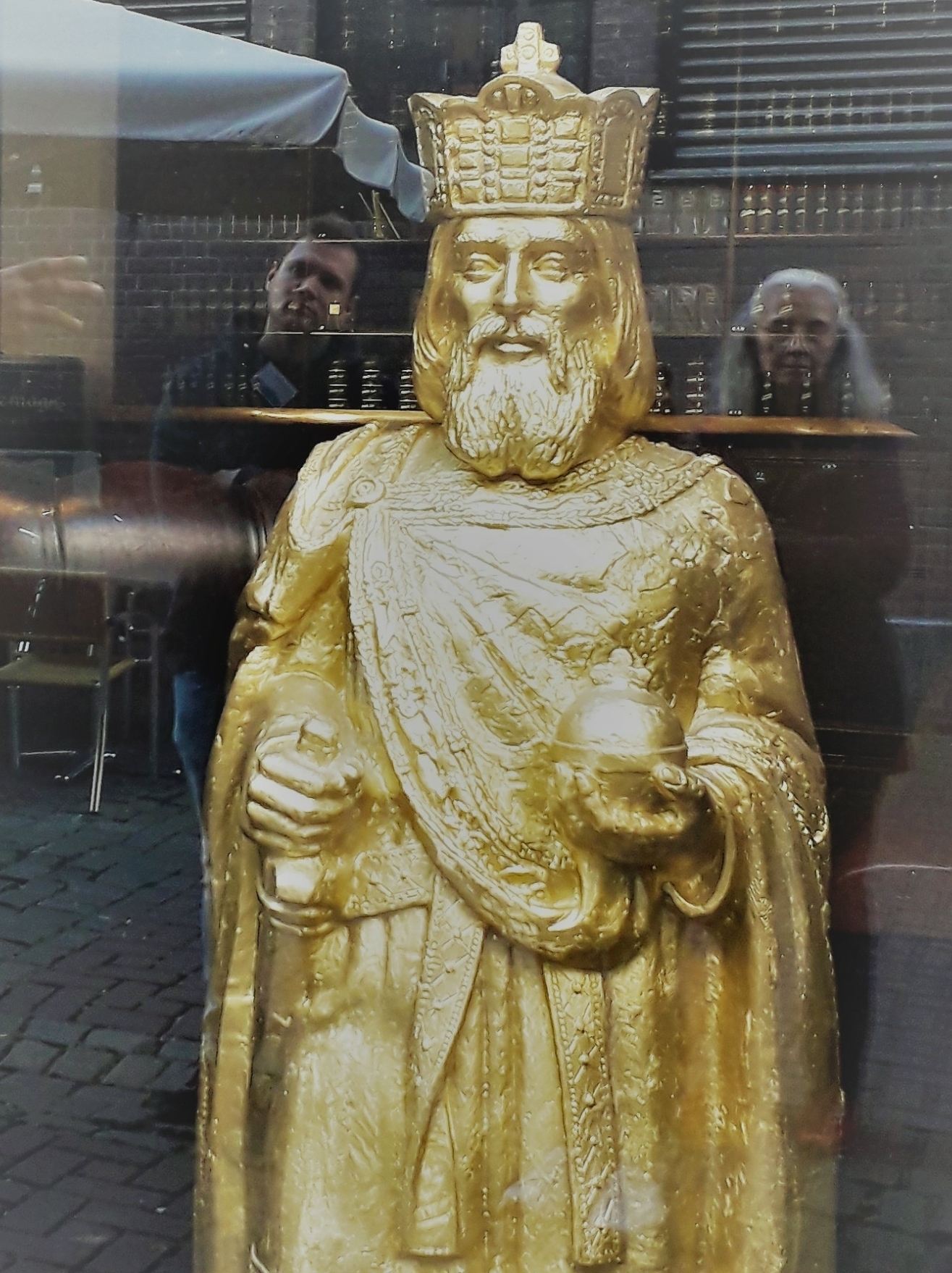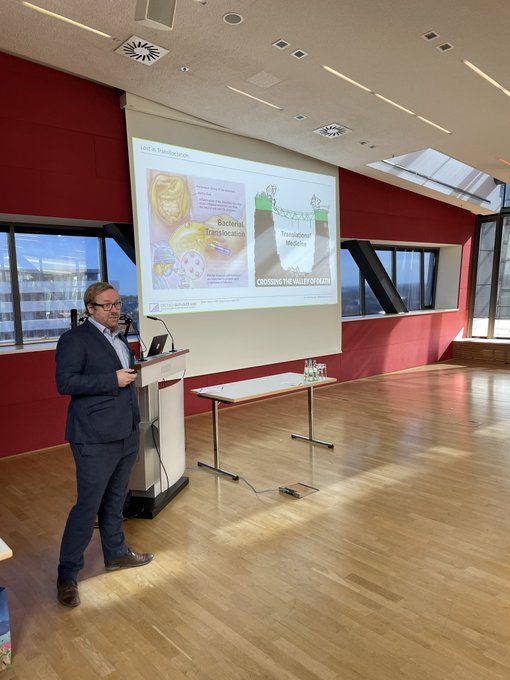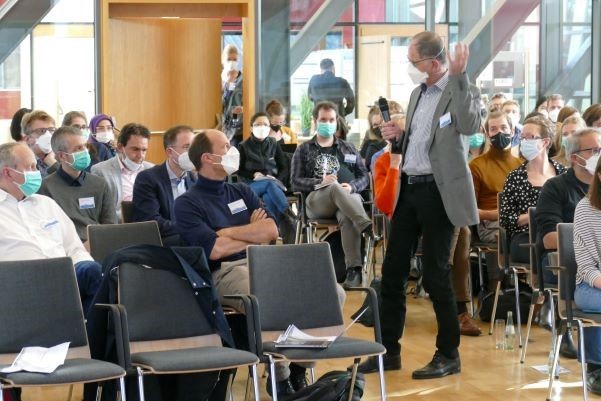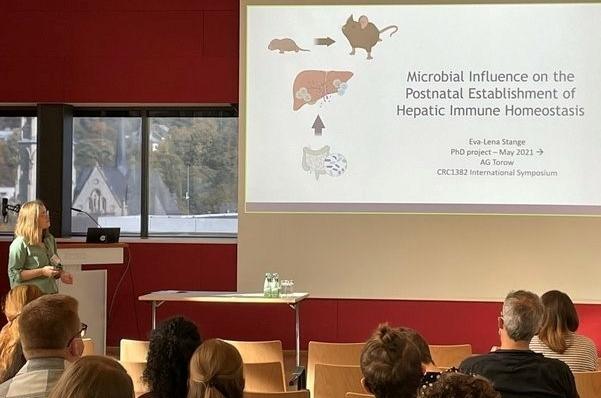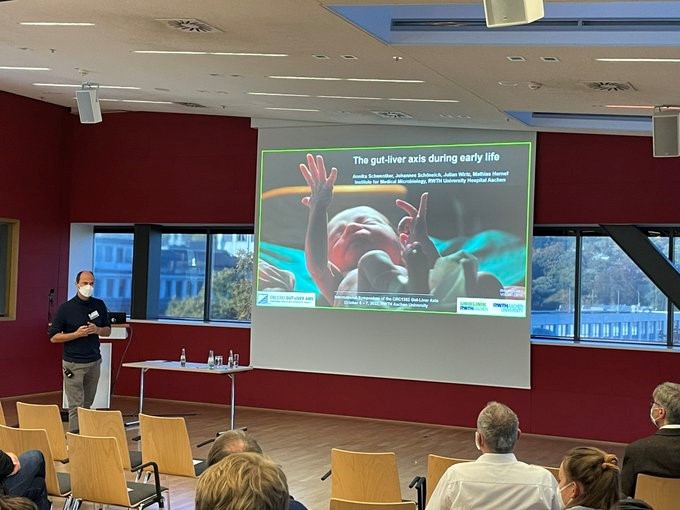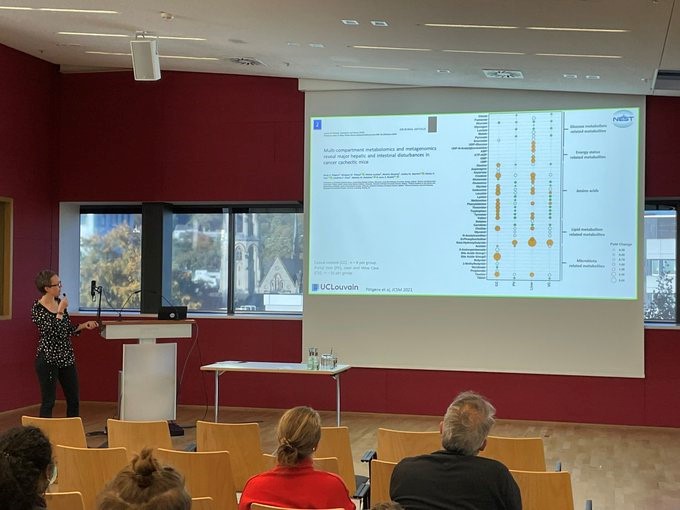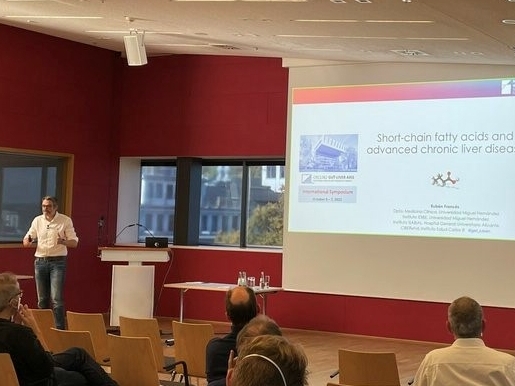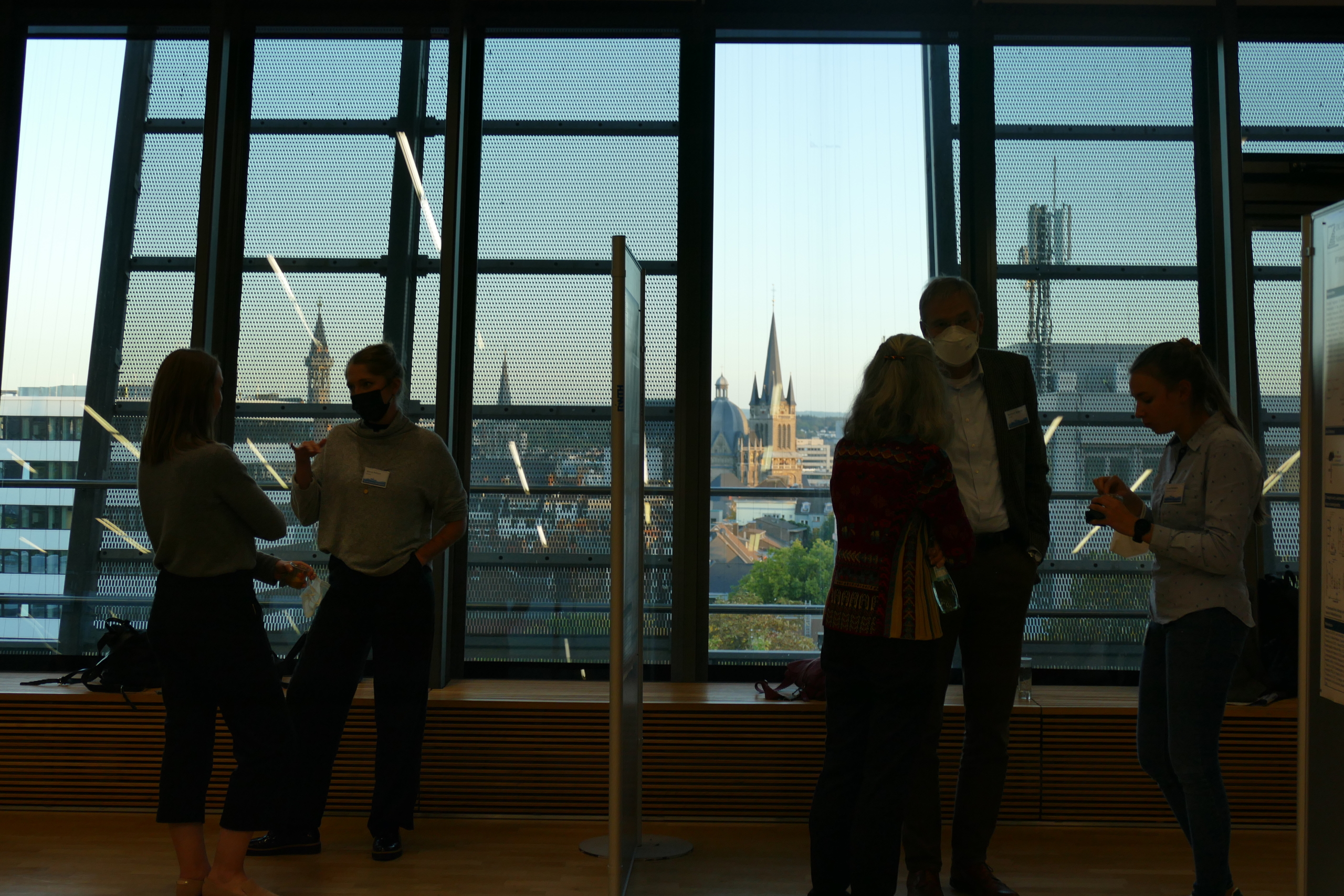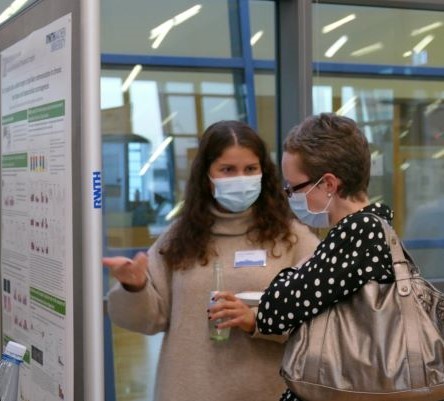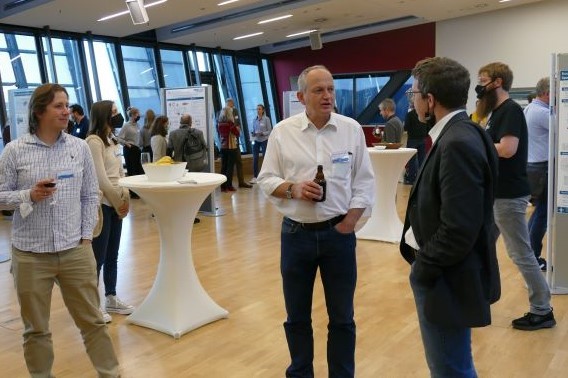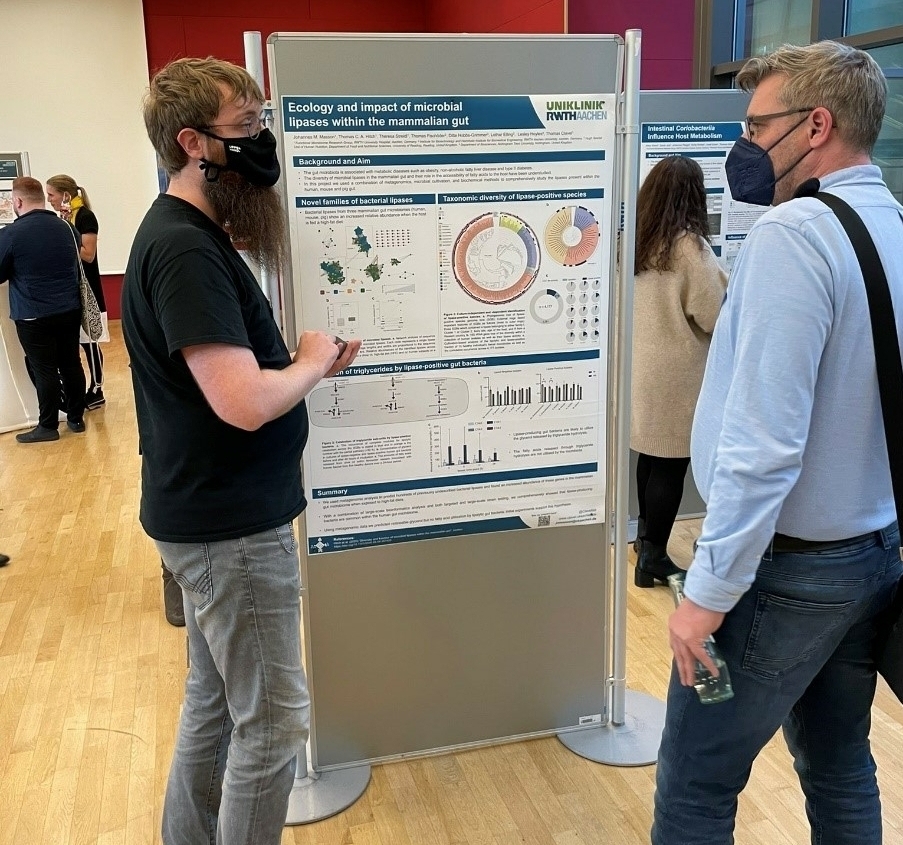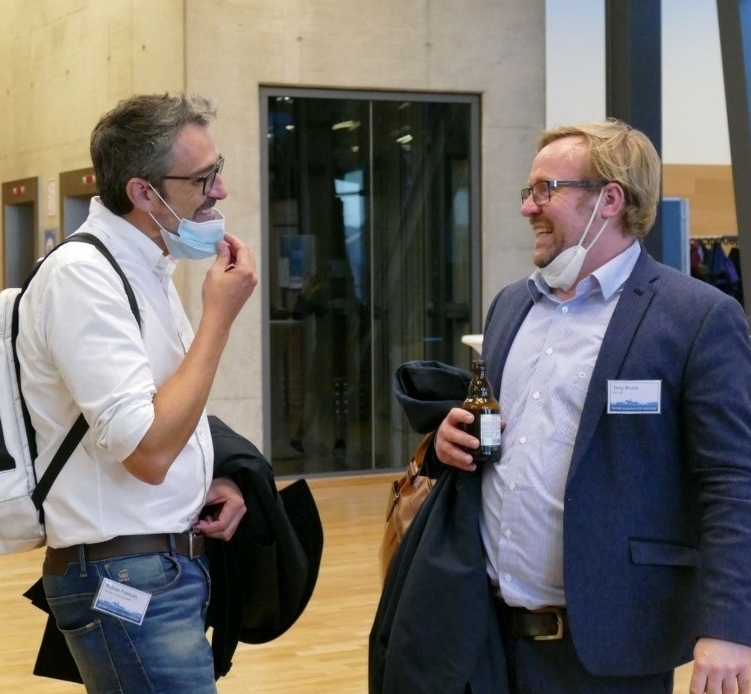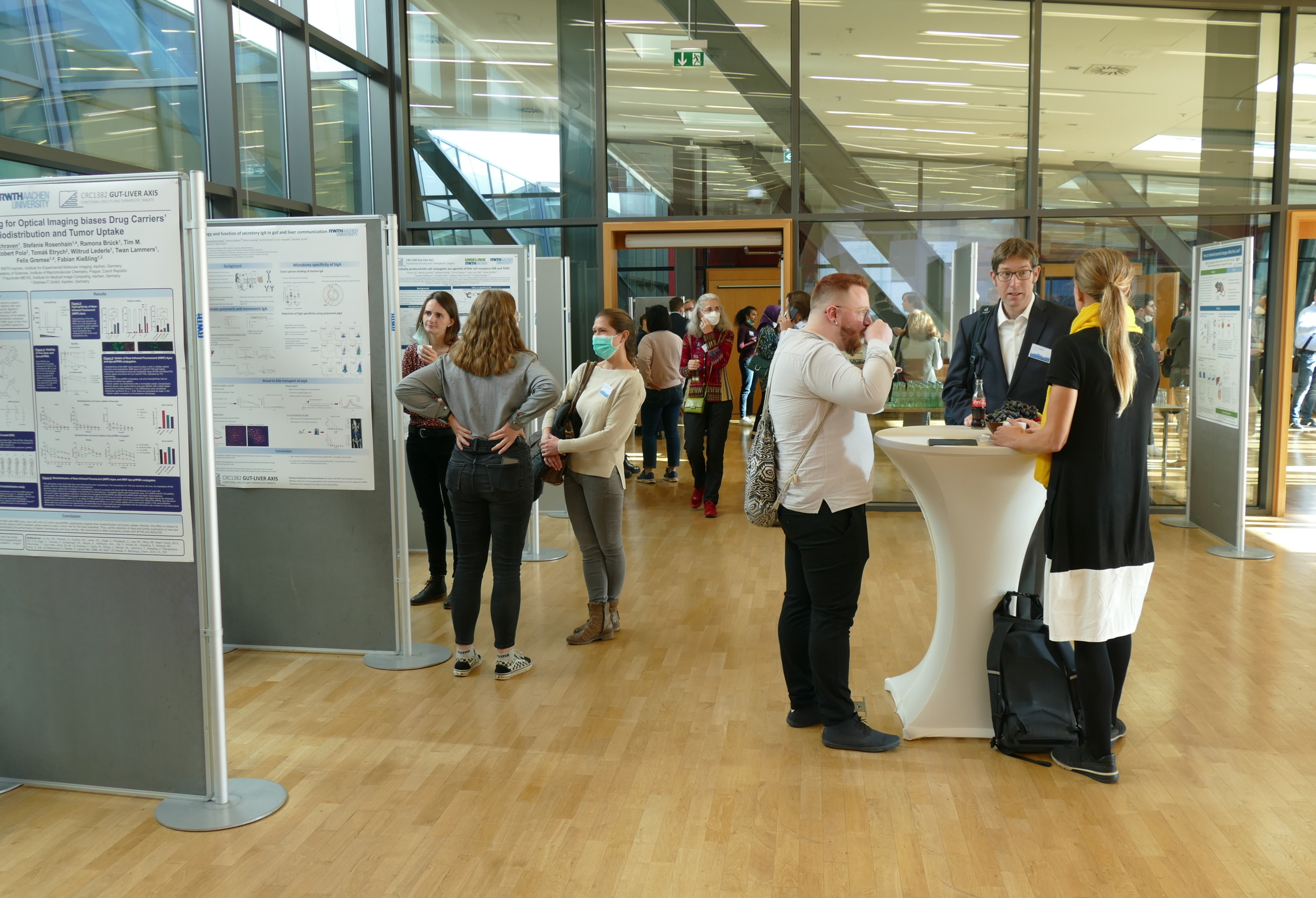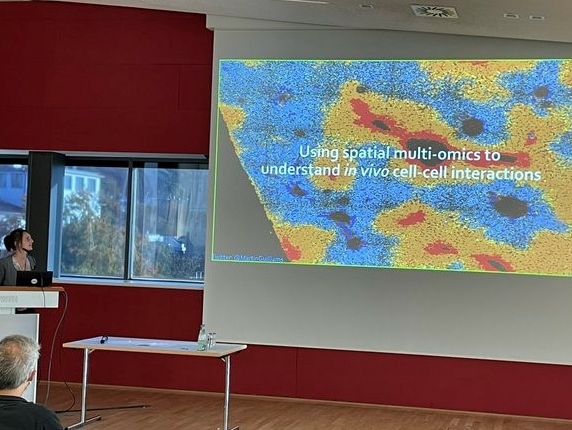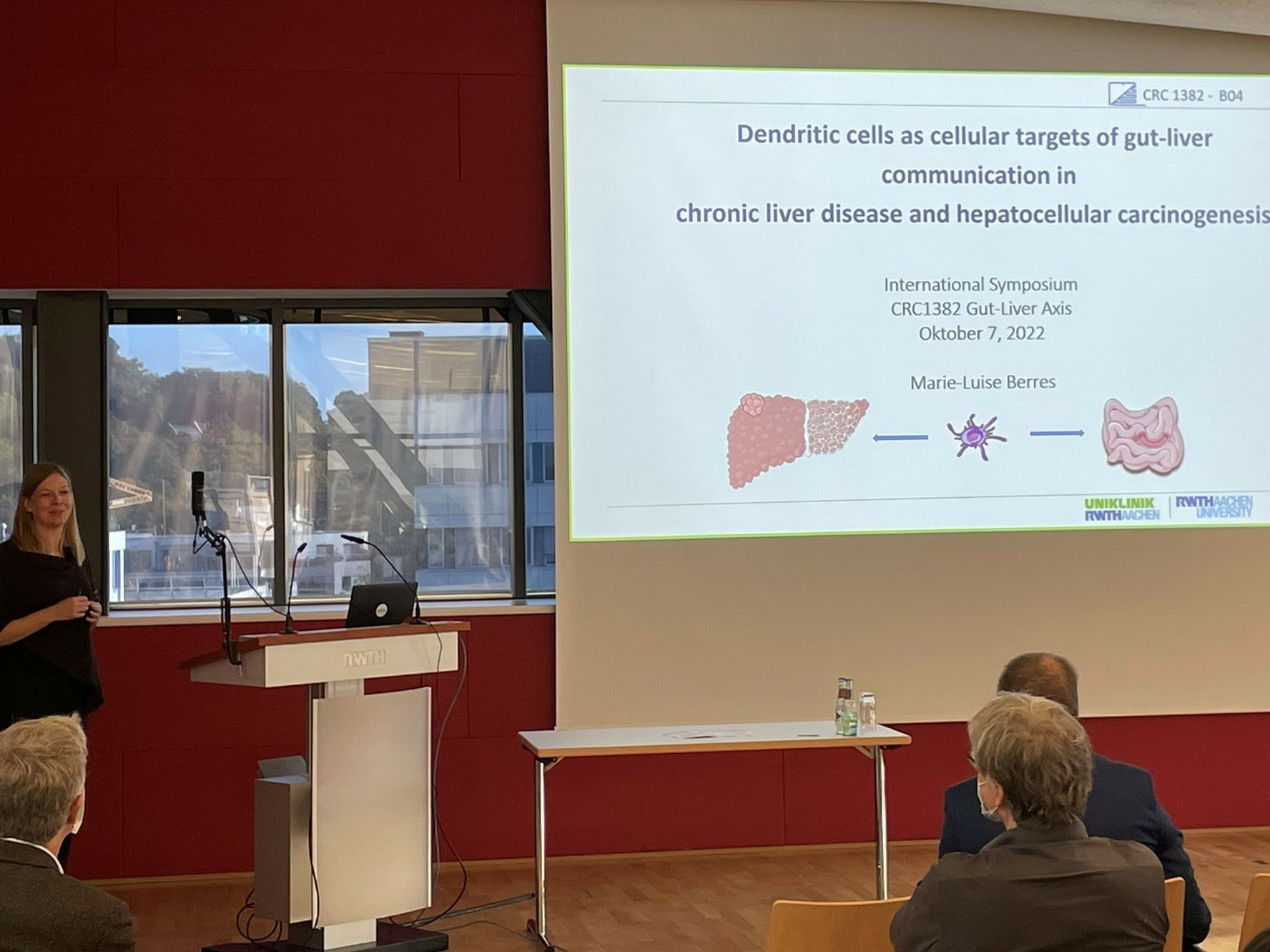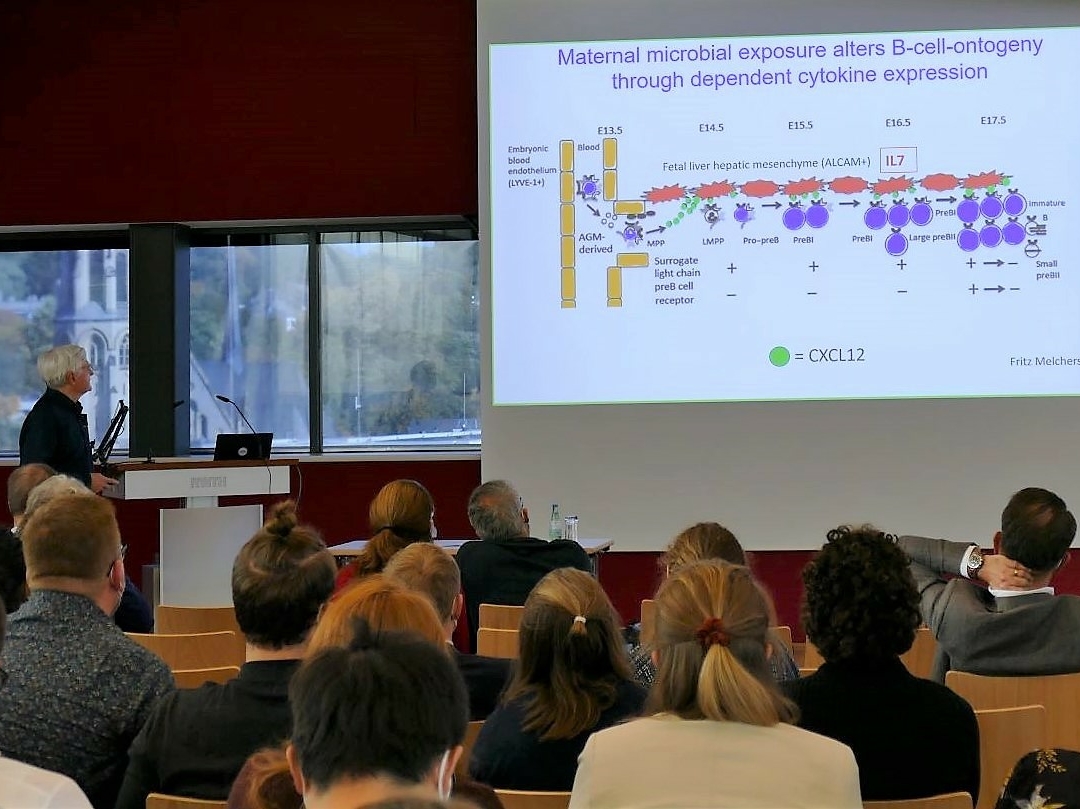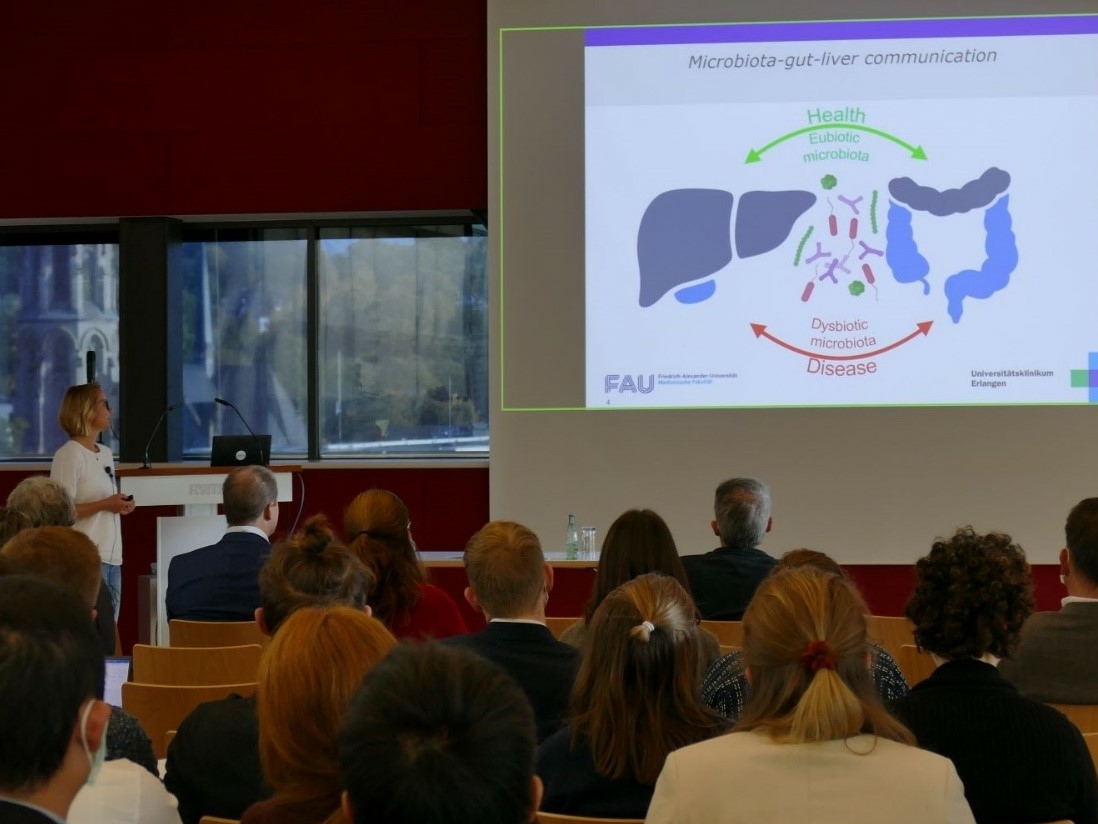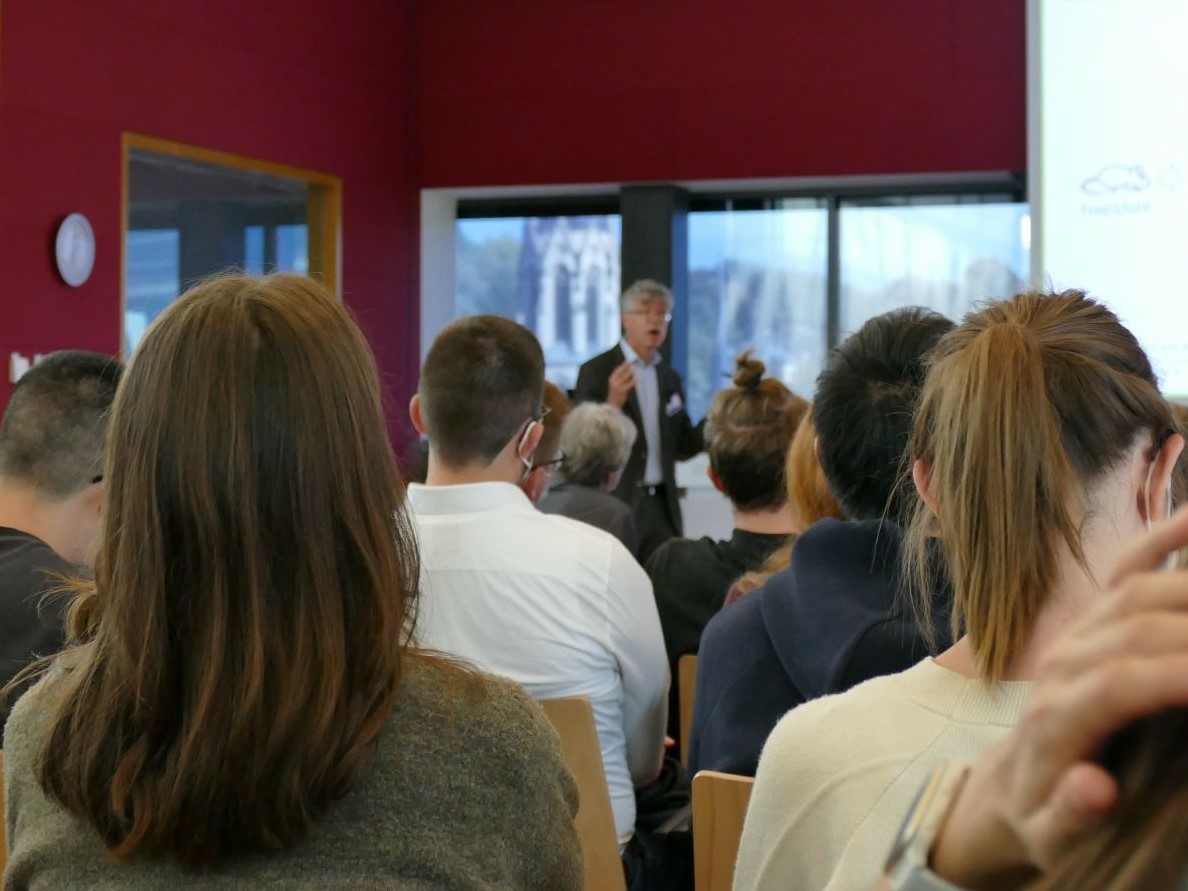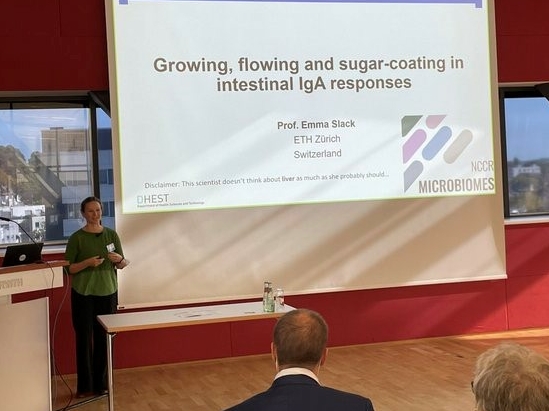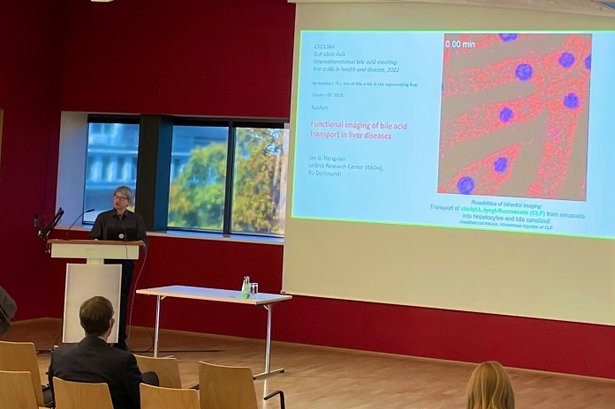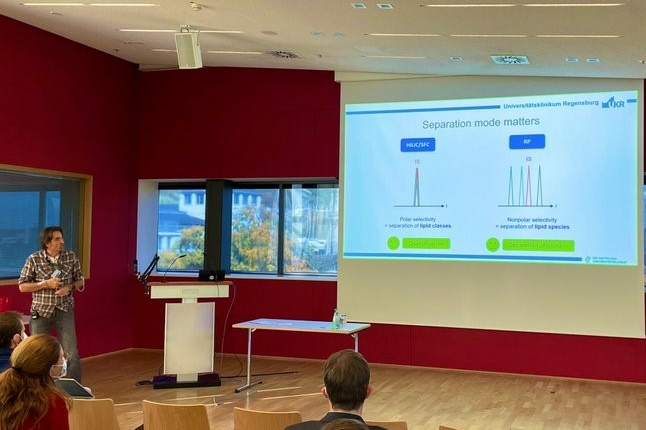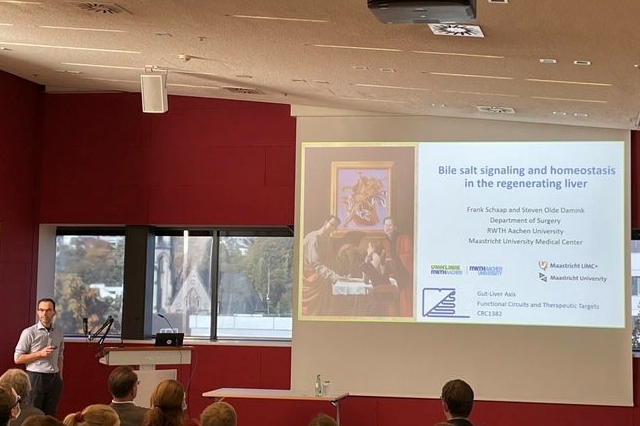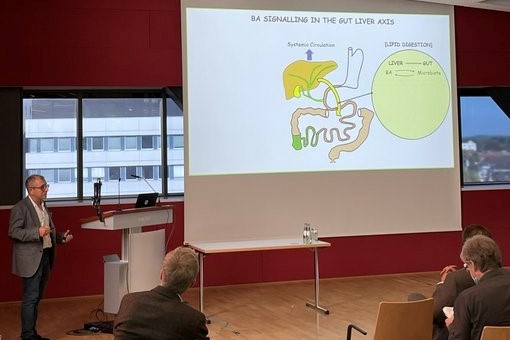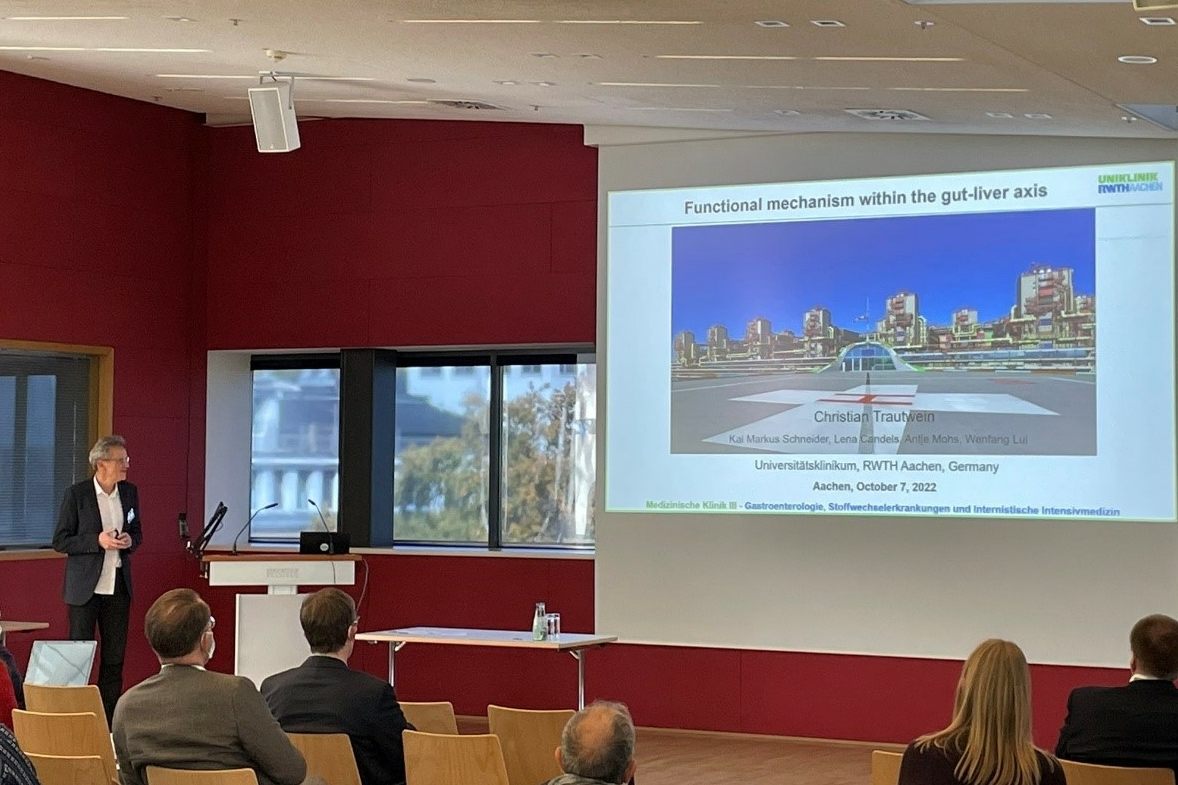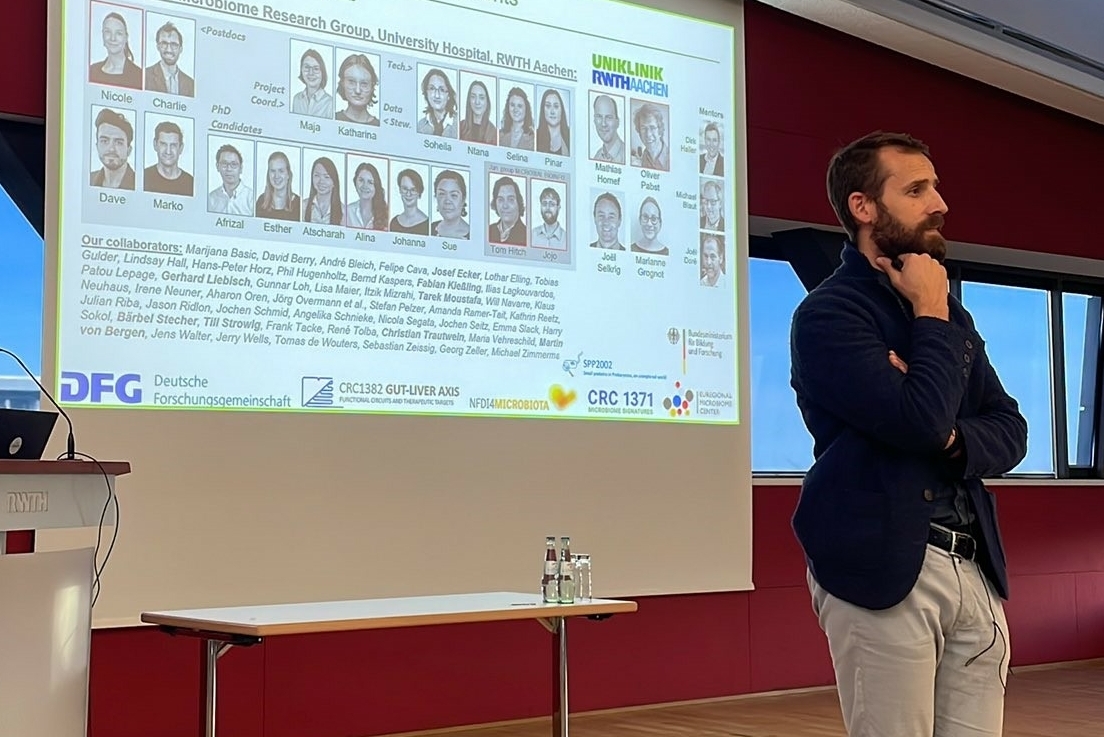CRC1382 International Symposium 2022
A brief report
Our first International CRC 1382 Symposium ‘Gut-Liver Axis: Functional Circuits and Therapeutic Targets’ was a great success. After more than two years of Corona Pandemics and countless Zoom events, we were fully committed to an exchange in presence. 15 renowned national and international experts in the gut-liver axis field accepted our invitation to join this two-day event in Aachen and share and discuss data and ideas.
In planning the scientific programme, we made major focus areas of our SFB the topic of 4 sessions:
- Diseases of the gut-liver axis
- Microbiome and gut-liver diseases
- Immune circuits in the gut-liver axis
- Mediators of gut-liver communication
In addition, we featured some Aachen highlights, such as our RWTH Aachen University, Printen, and Charlemagne, and made every effort to ensure that these aspects also receive appropriate attention…
Finally, the PhD students of our consortium should be given sufficient opportunity to present and discuss the results of their work.
Integrating these ingredients we came up with a packed two days programme comprising 30 talks given by invited speakers as well as PIs and PhD students of our CRC and its associated graduate school, 27 posters, a venue right at the center of RWTH university with panoramic views over the historic city centre, and last not least, a guided city tour and plenty of Printen.
Session 1: Diseases of the gut-liver axis
- Mathias Heikenwälder, EMBL Heidelberg, ‘The liver-gut axis in NASH-HCC’
- Frank Tacke, CRC1382, Charité Berlin, ‘Macrophage heterogeneity in liver diseases’
- Bernd Schnabl, University San Diego, USA, ‘Nonbacterial Kingdoms of the Gut Microbiota and Alcohol-Associated Liver Disease’
- Jonel Trebicka, CRC1382, Münster University, ‘Gut-liver-axis and decompensation of liver cirrhosis’
- Christoph Schramm, UKE Hamburg, ‘Primary sclerosing cholangitis: immune dysregulation in disease pathogenesis‘
- Tony Bruns, CRC1382, RWTH Aachen, ‘Lost in transl(oc)ation: Human peritoneal immunity in cirrhosis’
- Jonathan Jantsch, Cologne University, ‘Macrophage metabolism in antimicrobial immunity‘
In the following Short Talks session 5 PhD students of our Consortium, Sraddha Bharadwaj, Anna Verwaayen, Sarah Schraven, Eva-Lena Stange, and Huan Su, presented the results obtained during their PhD theses.
After a short on-site lunch break we stepped out into the radiant sunshine, split into smaller groups and headed of for guided city tours to learn what Aachen has and had on offer on top of science. We enjoyed the good mixture of sun, cultural input and physical activity, and well rested we continued with our afternoon session.
Session 2: ‘Microbiome and gut-liver diseases’.
- Laure Bindels, UC Louvain, Belgium, ‘Exploring the gut-liver axis in cancer cachexia’
- Rubén Francés, University clinics Alicante, Spain, ‘Short-chain fatty acids and advanced chronic liver disease’
- Mathias Hornef, CRC1382, RWTH Aachen, ‘The gut liver axis during early life’
- Max Nieuwdorp, Amsterdam UMC, The Netherlands, ‘Causality or association of gut microbiota and their metabolites in human NAFLD-NASH; potential for new diagnostic and therapeutic leads’
- Maria Vehreschild, Frankfurt University and future PI of CRC1382, ‘Modulation of the Gut-Liver Axis through Fecal Microbiota Transfer’
The scientific programme of the first day ended with an extensive Poster session along with with finger food, drinks, scientific discussions and networking.
A bright and sunny Friday started with Session 3 on ‘Immune circuits in the gut-liver axis’:
- Marie Berres, CRC1382, RWTH Aachen, ‘Dendritic cells as cellular targets of gut-liver communication in chronic liver disease and hepatocellular carcinogenesis’
- Aimée Bugler-Lamb, Ghent University, Belgium, ‘Unravelling the cell-cell interactions forming the foundation of the macrophage niche’
- Claudia Günther, Erlangen University Hospital, ‘Role of bacterial membrane vesicles along the gut-liver axis: Implications for novel therapeutic targets’
- Andrew Macpherson, Bern University Hospital, Switzerland, ‘The gut liver axis in early life and as a tool for studying B cell specificity’
- Oliver Pabst, CRC1382, RWTH Aachen, ‘Topology and function of secretory antibodies in gut-liver communication’
- Emma Slack, ETH Zurich, Switzerland, ‘Growing, flowing and sugar-coating in intestinal IgA responses’
After a short lunch break it was time for Session 4 entitled ‘Mediators of gut-liver communication’.
- Thomas Clavel, CRC1382, RWTH Aachen, ‘Synthetic communities of cultured gut bacteria enables the functional study of bile acid metabolism in health and disease’
- Jan Hengstler, TU Dortmund, ‘Functional imaging of bile acid transport in liver diseases’
- Lars Küpfer, CRC1382, RWTH Aachen, ‘Physiologically-based computational models of bile acid metabolism’
- Gerhard Liebisch, University Hospital Regensburg, ‘Quantitative Lipidomics – methods to analyze the Gut-Liver Axis’
- Frank Schaap, CRC1382, RWTH Aachen,‘Bile salt signaling and homeostasis in the regenerating liver’
- Thierry Tordjmann, Université Paris Sud, Orsay, France, ‘Hepatoprotective roles of the Bile Acid Receptor TGR5’
- Christian Trautwein, CRC1382, RWTH Aachen, ‘Control of bile acid metabolism within the gut-liver-axis’
Thanks to everyone for participating, organizing, sharing results and concepts.
Your contribution made our first symposium a great success!

